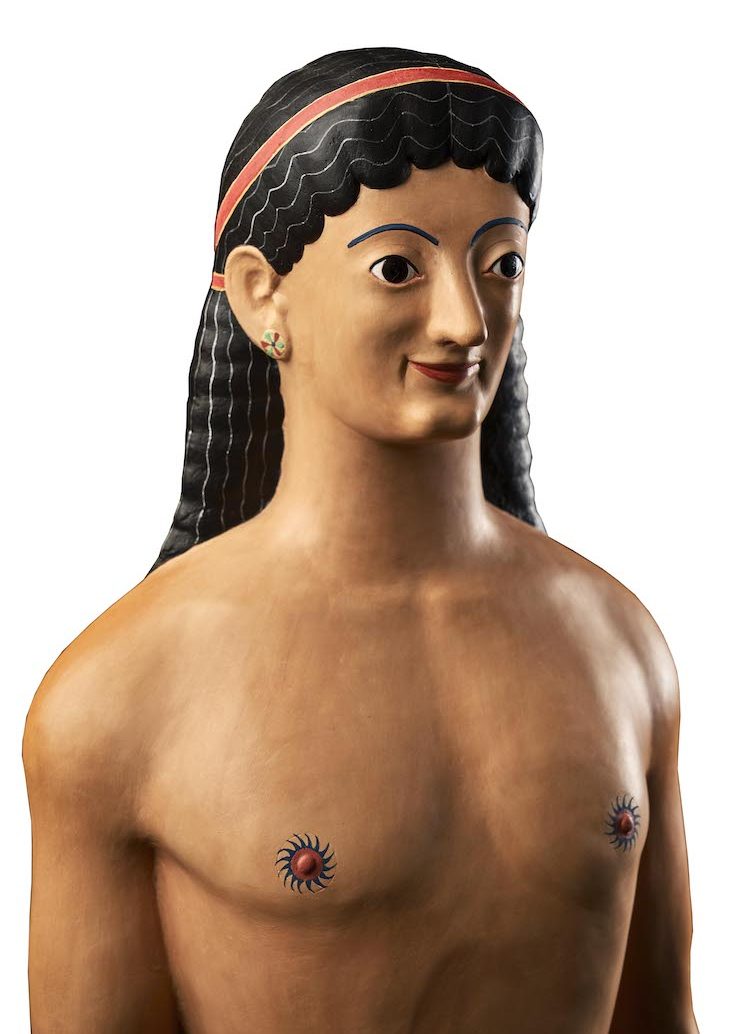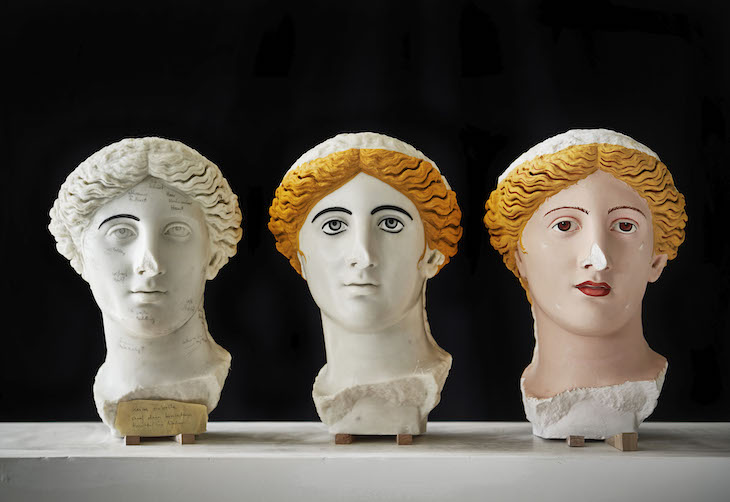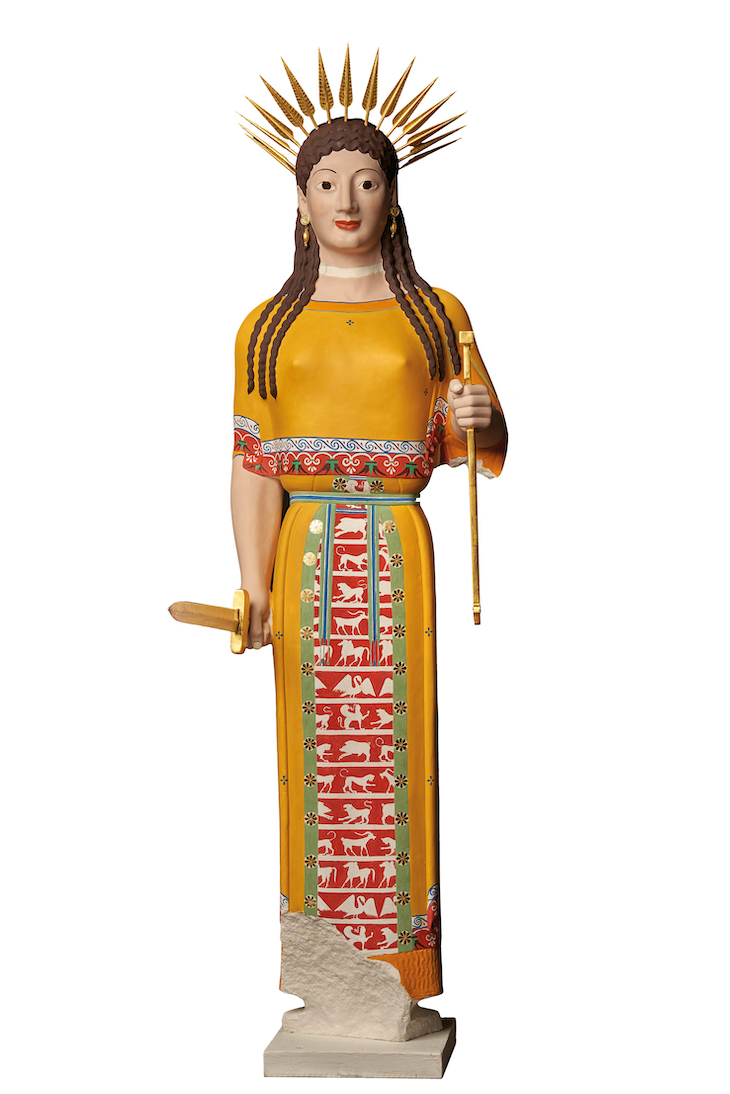Golden Edition: Polychromy in Antiquity
The image of white marble continues to colour our conception of the classical world – though today we know that Greek and Roman sculptures were often vividly painted. Under the direction of Vinzenz Brinkmann at the Liebieghaus, an international team of scientists has been researching the polychromy of classical statues for some 40 years. This display of reconstructed colour plaster casts, which presents their discoveries, has toured museums worldwide for the past 15 years; it returns now to the Liebieghaus in expanded form, with more than 100 objects including a number of new reconstructions. Find out more from the Liebieghaus’s website.
Preview the exhibition below | View Apollo’s Art Diary here

Experimental colour reconstruction of a kouros. Photo: Liebieghaus Skulpturensammlung/Norbert Miguletz
Early Greek funerary sculptures such as this kouros reveal a debt to the Egyptian use of colour, with the blue pigment used for the hair of the eyebrows and around the nipples, and the light brown of the skin – a combination of stylised decoration with naturalism that deepens our understanding of the Archaic style.

Experimental study of the polychromy of the so-called Treu Head. Photo: Liebieghaus Skulpturensammlung/Norbert Miguletz
The Treu Head – named after the German scholar Georg Treu, who published a study of the sculpture shortly after its discovery on the Esquiline Hill in Rome in 1884 – has played a crucial role in our modern understanding of polychromy in classical statuary, since it was found with extensive traces of pigments used to colour the skin and hair. These three models show different stages of the process by which researchers have used the pigment traces to recreate the colour scheme of the head.

Experimental colour reconstruction, Variant B, of the so-called Cuirass Torso from the Athenian Acropolis. Photo: Liebieghaus Skulpturensammlung/Norbert Miguletz
The statue known as the Cuirass Torso, from the Athenian Acropolis, is a sculptural depiction of a muscle cuirass – a type of armour designed to mimic the ideal human physique. Tempera paint mixed with gold leaf has been used here to communicate the dazzling appearance it might have once had.

Experimental colour reconstruction, Variant B, of the so-called Peplos Kore from the Athenian Acropolis. Photo: Liebieghaus Skulpturensammlung
Colour was not merely decorative for classical artists – it also provided viewers with important information about the identity of the figure depicted. By reconstructing the colours of this sculpture’s dress, researchers have now worked out that, with her animal-frieze garment, crown of feathers and weapons, this figure is a xoanon (cult image) of the goddess Artemis.











![Masterpiece [Re]discovery 2022. Photo: Ben Fisher Photography, courtesy of Masterpiece London](http://www.apollo-magazine.com/wp-content/uploads/2022/07/MPL2022_4263.jpg)
Has the Fitzwilliam got its rehang right?